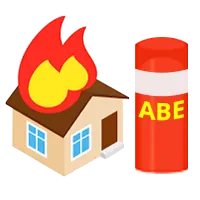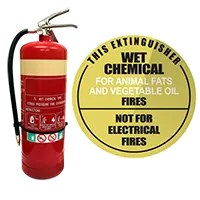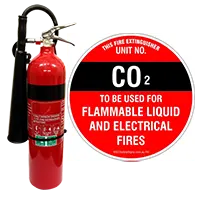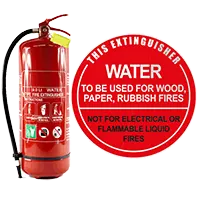Fire Equipment Safety Blog | Fire Extinguisher Online
- 18 MarRead more »
- 10 MarRead more »
Is your home fire safe?
A fire can happen anywhere and it’s important to always be prepared for what you would do if you had one in your home.
Of course, having the right safety equipment to protect your home against fire, such as
- 7 MarRead more »
 Every year there are around 20,000 house fires
Every year there are around 20,000 house fires - 2 MarRead more »
When installing your fire extinguisher, you need to be informed and understand how to install extinguishers in accordance with Australian Standards AS2444
How to install a Fire Extinguisher?
If your fire extinguishers
- 1 MarRead more »
 In Australia, Wet chemical Class F extinguishers were developed for modern, high efficiency deep fat fryers in commercial cooking operations. They may also be used on Class A fires in commercial kitchens. Here’s a guide on how to identify them, how they work and when to use them safely:
In Australia, Wet chemical Class F extinguishers were developed for modern, high efficiency deep fat fryers in commercial cooking operations. They may also be used on Class A fires in commercial kitchens. Here’s a guide on how to identify them, how they work and when to use them safely: Wet c
- 1 MarRead more »
 Carbon Dioxide Fire Extinguishers are most commonly used for Class E fires (Electrical) in Australia. Also known as a CO2, or
Carbon Dioxide Fire Extinguishers are most commonly used for Class E fires (Electrical) in Australia. Also known as a CO2, or - 25 FebRead more »
 In Australia, Water Class A extinguishers are one of the most common fire extinguishers on the market. Water is a very cost effective solution and has zero impact on the environment. Here’s a guide on how to identify them, how they work and when to use them safely:
In Australia, Water Class A extinguishers are one of the most common fire extinguishers on the market. Water is a very cost effective solution and has zero impact on the environment. Here’s a guide on how to identify them, how they work and when to use them safely: Water fire extinguisher
- 17 FebRead more »
Going in the bush with your 4WD? Are you prepared for a Fire?
A fire can happen anywhere, especially in the Australian Bush, and it’s important to always be prepared for what you would do if you had one in your 4x4 or Camping Ground.
There are no mandatory or legal requirements in Australia to have fire extinguishers in your 4WD (except for motorhomes and caravans*). But of course, having the right safety equipment to protect your 4wd against fire, such as a fire extinguisher is essential to protect your camping ground, passengers and vehicle.
Fire risks for 4WDs in the bush?
- Camp fires:
Going on an adventure with your 4x4 takes you to the country side and the outback, and nothing beats a camp fire under the southern stars. This comes with a fire risk that should be quickly managed.
- Bush fires:
Unfortunately bush fires are more and more common those days; either b
- Camp fires:
- 14 FebRead more »
Is your holiday rental accommodation fire safe?
Renting your property via Airbnb, booking.com, Stayz or any other online holiday rental platform is easy and effective, but it comes with some fire safety risks as well.
A fire can happen anywhere and it’s important to always be prepared f
- 10 FebRead more »
Going flying with your Aircraft? Are you prepared for a Fire?
In Australia, regardless of whether the regulations require a Fire Extinguisher or not, CASA (Civil Aviation Safety Authority) recommends at least one Fire Extinguisher be fitted to
